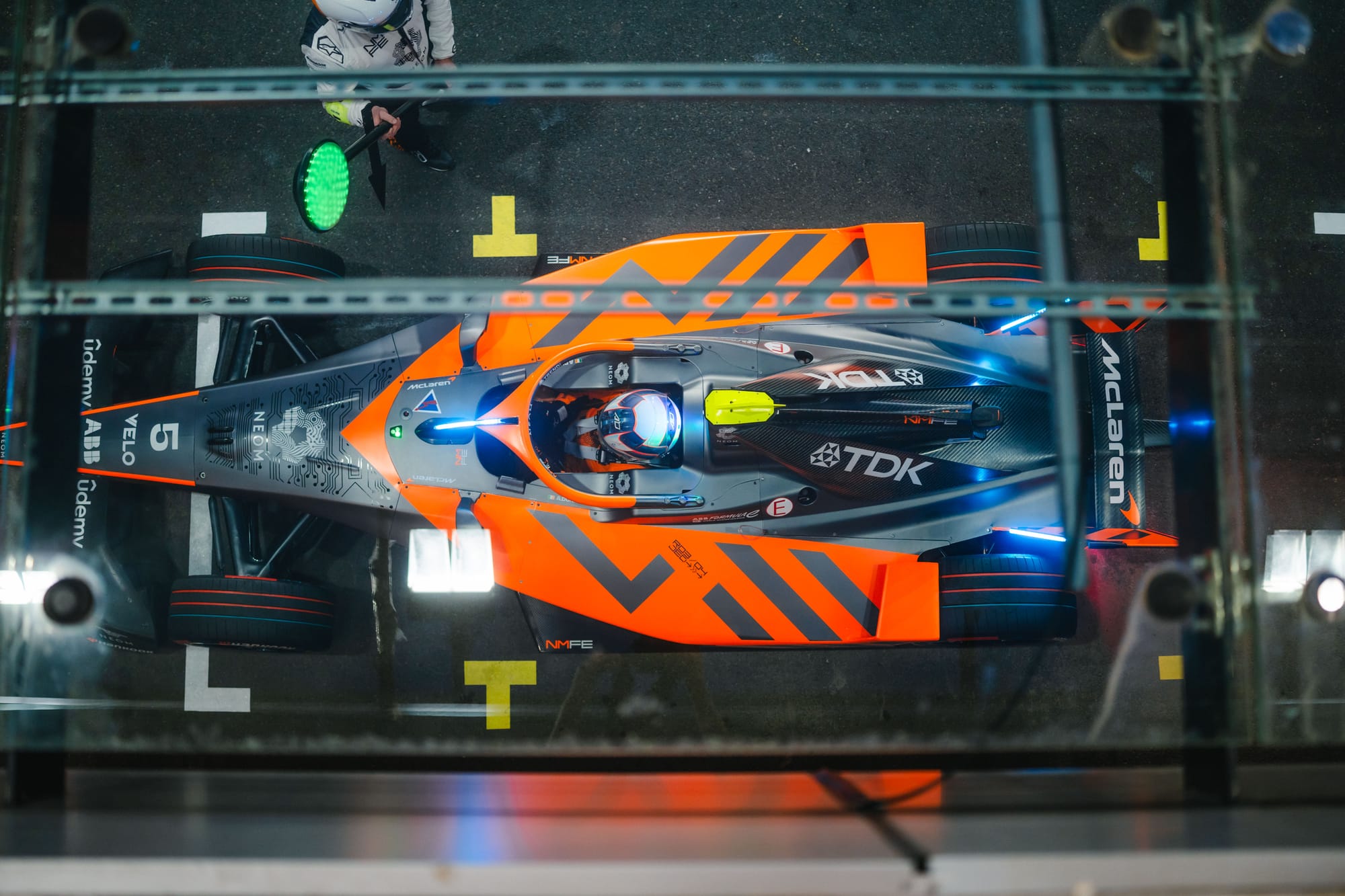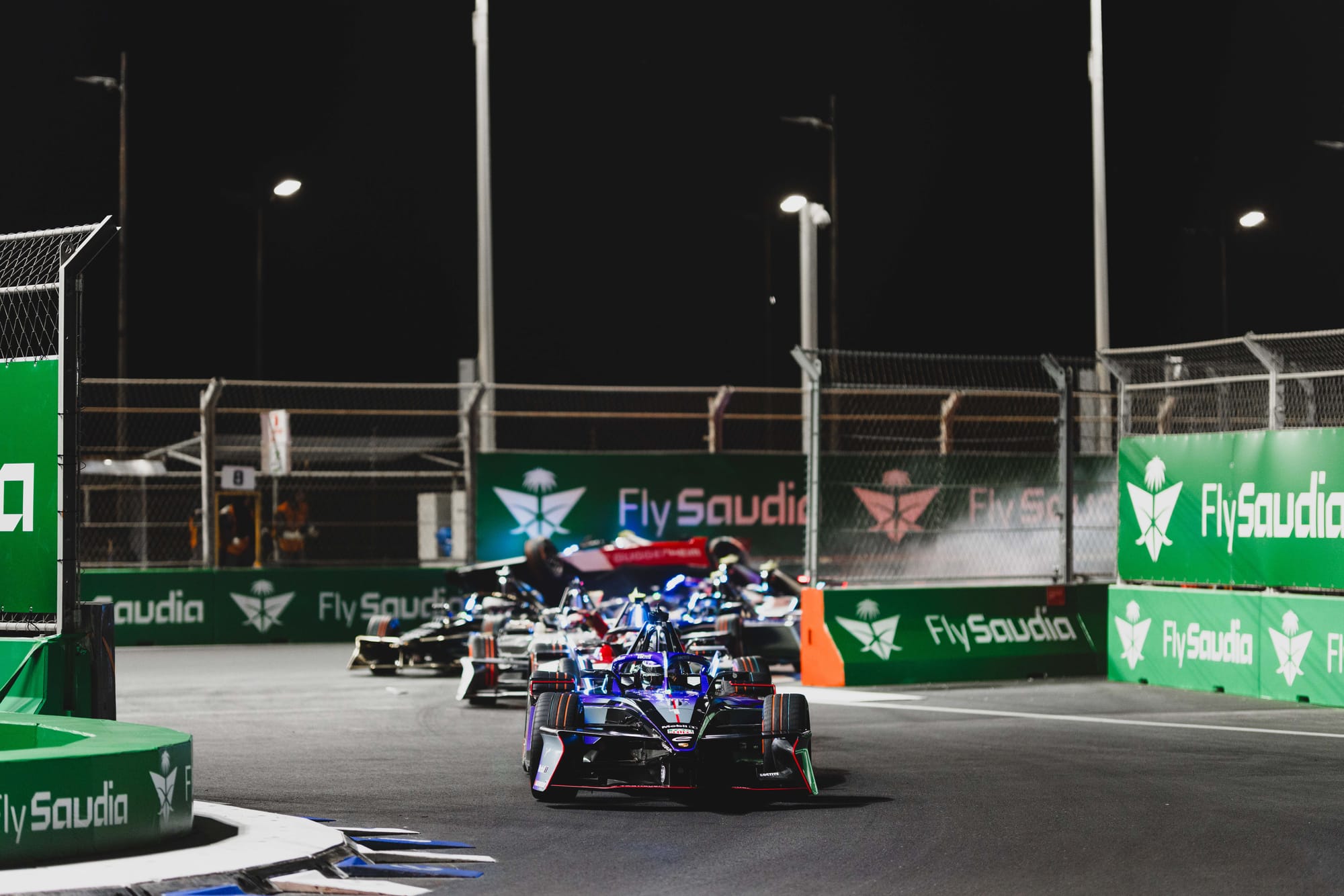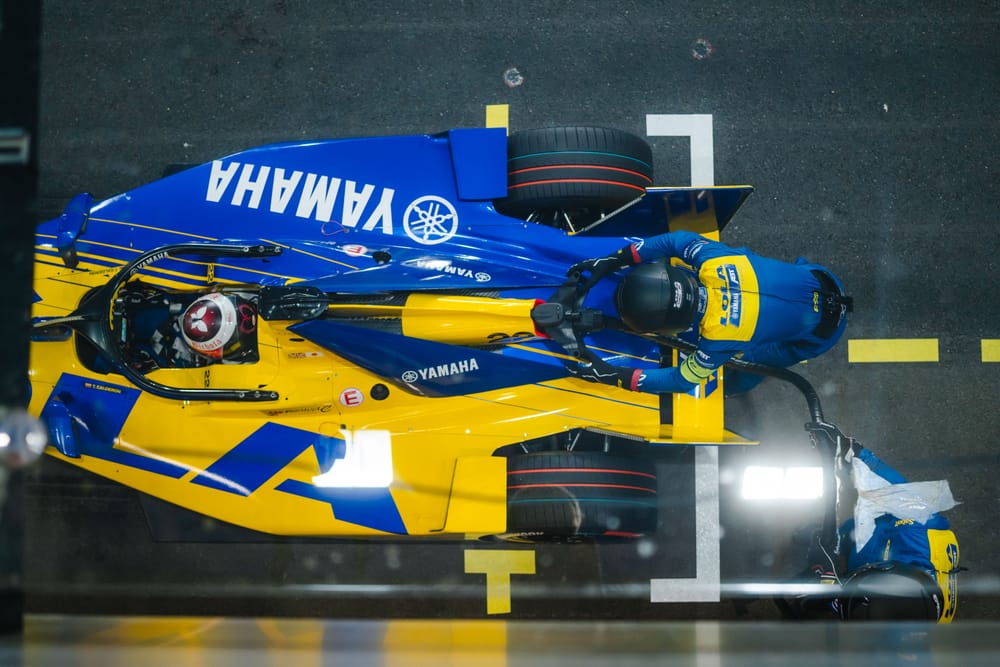It's reckoned that William Shakespeare came up with the term "Gild the Lily" in his 1595 work, King John.
It means to add unnecessary ornamentation to something beautiful in its own right. In other words, to overly meddle with something that is pretty great anyway.
Throwing in such a big addition as the Pit Boost stops to the Formula E sporting landscape on the whole worked, practically speaking, for those taking part in it.
But what of those trying to absorb its debut in Friday's Jeddah race as a sporting spectacle?
It felt a bit like a T20 cricket match on speed. A traditional sporting narrative scrambled like an upturned snow globe so blizzard-like that even the TV graphics trying their best to shift a Tetris-style puzzle in multiple inputs to the stunned brains of the viewers weren't enough.
All that in addition to the two hits of attack mode packed into a race that lasted 43 minutes felt too much. Overload.
But, in a world of multiple bangs for a buck, short attention spans and a 'now-now-now' society, amid new generations who want to be dazzled every minute, perhaps it was just the ticket.

Technically the Pit Boost worked. There were no failures of the equipment as far as we know a few hours after the race, although there was a suspected RESS battery issue for Jake Dennis' Andretti Porsche that needs further investigation. By initial accounts this looks like a similar failure to the one he suffered in the mock race at Jarama, although there is no suggestion that it is absolutely related to the Pit Boost charge procedure.
Then there was Nissan’s Oliver Rowland driving through the Andretti pit area causing the mechanics to scatter. That feels like a slam-dunk penalty in other pitlanes but after review any sanction was declined to the amazement of those watching on from the Andretti viewing area at the back of their pit.
But how many of the viewers really digested and understood the whole phase of the stops? A race of such multiple inputs of action probably needs a re-watch, but how many casual or even dedicated fans will actually do that?
Ironically the same technical competence could not be said for the TV feed in the Jeddah media centre, which left the press with no timing screen for half of the race and a corrupted live action feed for the majority of it.
That apart, no doubt the promoters and the FIA will be quietly pleased with Pit Boost’s debut as it shook up the field a bit as early leader Maximilian Guenther dropped back. His pursuers, Rowland and Taylor Barnard, were unsure of how that really played out, and so were those watching.
"I had no idea what was happening to be honest," Rowland told The Race.
"I knew my plan and my strategy was to do exactly what I did. I was surprised nobody else was with me doing the same thing, to be honest, because we felt like that was the right thing to do, kind of build a gap, take the attack mode, do a safe pitstop, and then see where you come out.

"I think it'll take a bit of time. The problem you've got is you've got people who want to box straight away to try and cover a safety car. Then you've got people who stay out, knowing that it's probably more likely that a full-course yellow will come, so you stay out.
"Then you've got this disparity of people. But for me, it was quite good to have to push in the phase where I knew the gaps of who was the virtual leader. So, I was the leader, but the virtual second place, which I was kind of controlling the whole way through my stint.
"It was quite interesting from my perspective, but I had no idea what it looked like on TV.”
The race was, in a way, a subtle mirror of Tokyo last March when Guenther and Rowland jousted in similar fashion with the German again on that occasion executing an energy affected move on his rival.
The pitstops have elements of confusion even for some of the drivers and team principals, especially as the pitting didn't come in large swathes of cars and was rather more broken up than anticipated.
"From my perspective it was really hard to know what the true running order was and where you were going to ultimately end up and it was probably a good five laps after the pit boost had taken place that you could start to see [what was happening]," Andretti boss Roger Griffiths told The Race.
"Obviously we didn't quite have two groups of cars coming in, we had a third and maybe then the rest so it was a little hard to follow because people were having different attack mode strategies and some people went early.
"Others held on to it and didn't use it until after they'd taken the pit boost, so it was a little hard to follow in that middle portion of the race and hard to say if it added anything to the spectacle or not at this stage.
"We have to wait and see how the general reaction on TV is because when you're watching your specific car your general awareness of what is going on globally is not the same as perhaps somebody watching at home. We're a little bit more focused on one or two specific cars."
What may mask the confusion more, in truly appraising the action, following a race like today’s, is the fact that tomorrow’s is likely to be just as mad. But for a very different reason.
The ultra-peloton effect that marred and scarred the heavy-energy-saving Portland and Misano races last year will be back with a vengeance and with three chicanes that will likely mean more than a degree of chaos.
Formula E offers a variety of products now, and perhaps that adaptability will become a strength in time, and maybe we will get used to absorbing the multiple threads. One conclusion that can't be argued though is that it didn't result in a dud race.
But Formula E very rarely offers up one of those anyway, so bring on another Shakespearean epic, only this time let's hope it's one that we can all understand fully.




